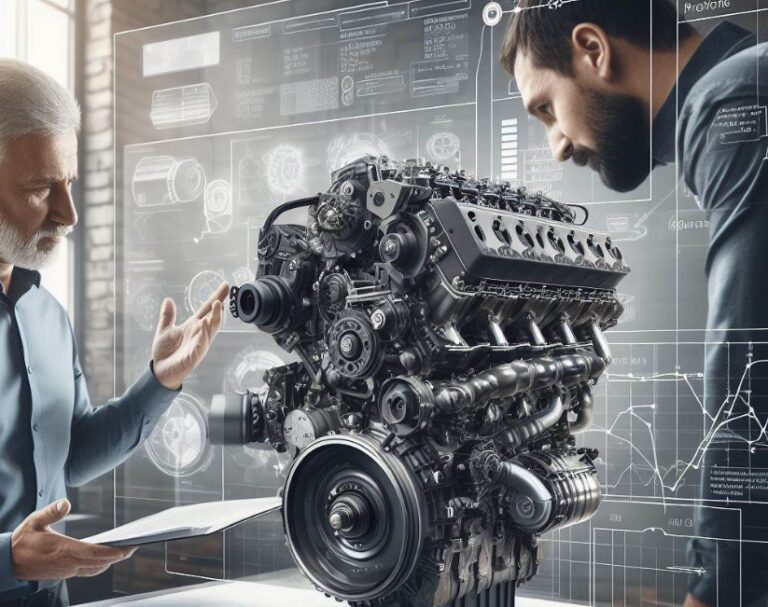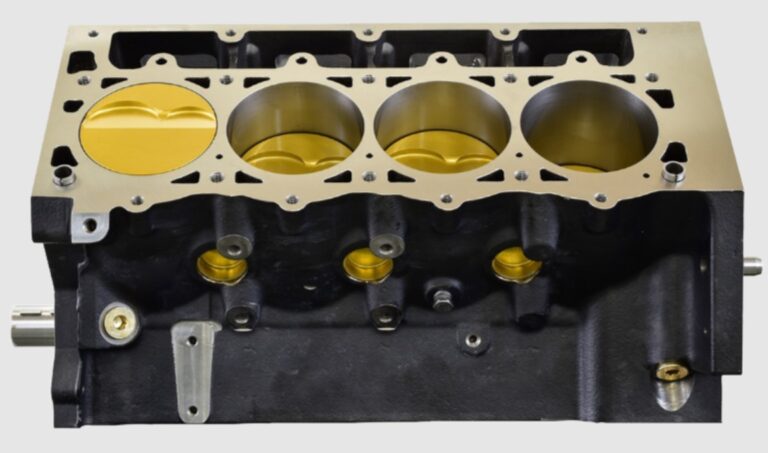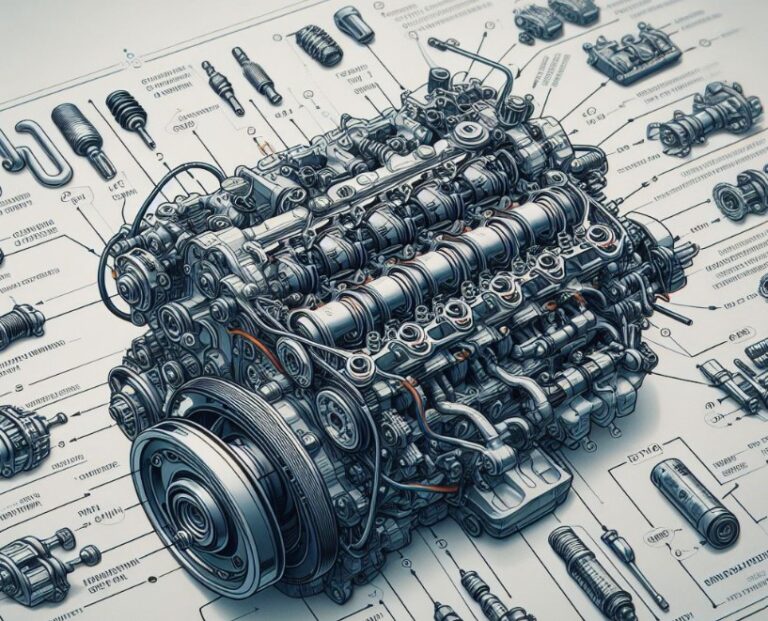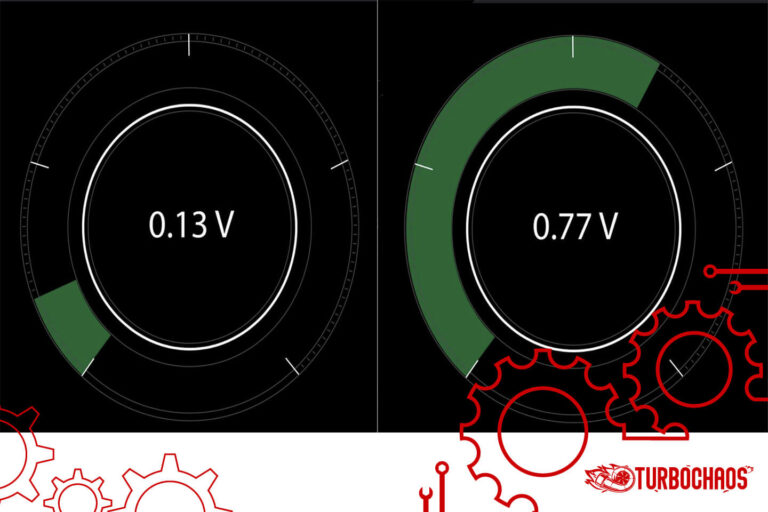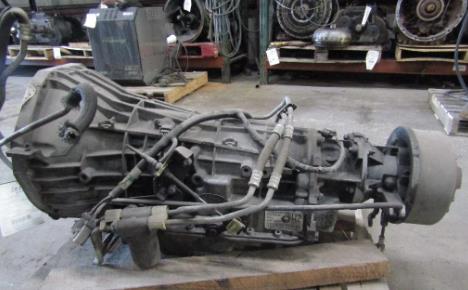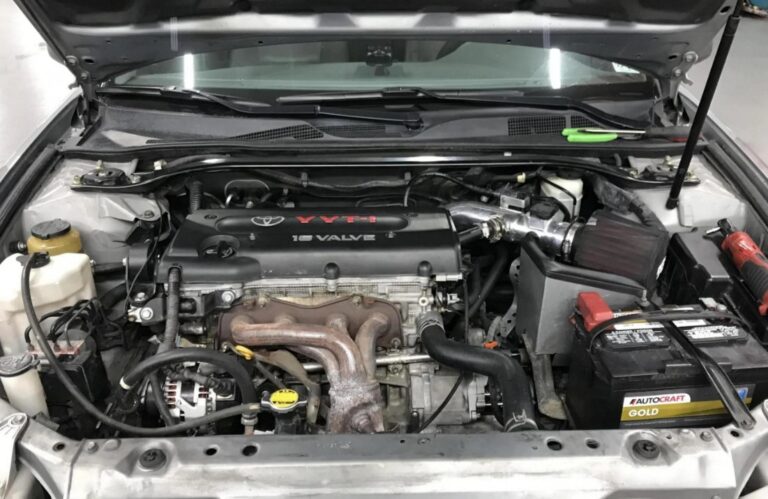Are All GY6 Engines The Same? All You Need To Know
The GY6 engine, a staple in the world of scooters and small vehicles, has gained significant popularity for its reliability and versatility. However, a common question arises: Are All GY6 Engines The Same? This article delves into the nuances of GY6 engines, exploring their variations and what sets them apart. We’ll dissect the engine’s specifications, configurations, and compatibility factors to give you a comprehensive understanding.
Key Takeaways
- GY6 engines are not all the same; variations exist in size, power output, and compatibility.
- Common differences include engine displacement, carburetor types, and starter mechanisms.
- Understanding these variations is crucial for repairs, upgrades, and replacements.
Are All GY6 Engines The Same?
No, all GY6 engines are not the same. While they share a basic design, variations exist in terms of displacement size (like 50cc, 125cc, 150cc), carburetor types, starter mechanisms, and dimensions (long or short case). These differences affect their compatibility, performance, and use in different vehicles.

Variations in GY6 Engine Displacements
Understanding Engine Size Differences
One of the primary differences among GY6 engines lies in their displacement sizes. Common variations include 50cc, 125cc, and 150cc engines. Each size offers distinct performance characteristics:
- 50cc engines are known for their fuel efficiency and are ideal for short, city commutes.
- 125cc and 150cc engines provide more power and are suited for longer distances or heavier loads.
These differences in engine size directly impact the scooter’s speed, acceleration, and load capacity.
Impact on Performance and Usage
Larger engines, like the 150cc, deliver higher top speeds and better acceleration, making them suitable for more demanding applications. On the other hand, smaller engines, such as the 50cc, are more about economy and ease of use, perfect for urban environments with frequent stops and starts.
Carburetor Types in GY6 Engines

Role of Carburetors in Engine Performance
The carburetor, a critical component of the GY6 engine, varies in type and size. It plays a pivotal role in the engine’s fuel management, affecting overall performance and efficiency.
Differences in Carburetor Designs
GY6 engines come with different carburetor designs, each tailored to the specific needs of the engine displacement. Larger engines often require carburetors with higher capacities to match their increased fuel and air requirements.
Starter Mechanisms in GY6 Engines
Electric vs. Kick Starters
Another area where GY6 engines differ is in their starting mechanisms. Some models are equipped with electric starters for ease of use, while others rely on traditional kick starters.
Choosing the Right Starter Mechanism
The choice between electric and kick starters depends on personal preference and the intended use of the vehicle. Electric starters offer convenience, especially in urban settings, while kick starters provide reliability and a mechanical simplicity valued by enthusiasts.
Compatibility and Interchangeability
Understanding Fitment and Compatibility
Not all GY6 engines are interchangeable. Compatibility depends on several factors, including engine size, mounting points, and transmission setup.
Importance for Repairs and Upgrades
For those looking to repair or upgrade their GY6 engine, understanding these compatibility issues is crucial. It ensures that replacement parts fit correctly and function as intended.
Engine Maintenance and Longevity

Regular Maintenance for Optimal Performance
Maintaining a GY6 engine involves regular checks and servicing. This includes oil changes, air filter cleaning, and spark plug inspections.
Impact of Maintenance on Engine Life
Proper maintenance not only ensures optimal performance but also extends the engine’s lifespan, reducing the need for costly repairs or replacements.
Advanced Modifications and Customizations
Enhancing Performance Through Modifications
For enthusiasts looking to boost their GY6 engine’s performance, there are numerous modification options available. These range from simple tweaks like upgrading the exhaust system to more complex changes such as installing a bigger carburetor or a high-performance camshaft. These modifications can significantly increase power output and efficiency, transforming the riding experience.
Customization for Personal Preference
Beyond performance enhancements, GY6 engines also offer a plethora of customization options. Owners can personalize their engines with aesthetic modifications such as custom paint jobs, chrome plating, or unique engine covers. These customizations allow riders to express their individual style while enjoying the reliability and versatility of the GY6 engine.
The Impact of Environmental Conditions
GY6 Engines in Different Climates
The performance of GY6 engines can be influenced by the environment in which they operate. In colder climates, these engines may require additional warming up time and potentially thicker oil for optimal performance. Conversely, in hotter regions, ensuring adequate cooling and using thinner oil can help maintain engine efficiency and prevent overheating.
Adapting to Altitude Changes
Altitude also plays a role in how a GY6 engine performs. At higher altitudes, where the air is thinner, engines might experience a reduction in power. Riders in such areas often adjust their carburetor settings to compensate for the lower air density, ensuring that the engine delivers the best possible performance.
GY6 Engine Variants in Different Vehicle Types

GY6 Engines in Scooters and Mopeds
While GY6 engines are most commonly associated with scooters, their use is not limited to just this type of vehicle. In scooters and mopeds, these engines are prized for their balance of power and fuel efficiency. They provide enough thrust for urban commuting while keeping operating costs low.
Expanding Beyond Two-Wheelers
Beyond scooters, GY6 engines have found their way into an array of other vehicles, including ATVs, go-karts, and even some light utility vehicles. Their compact size and robust performance make them an excellent choice for these applications, offering reliability and adaptability across various vehicle types.
Technological Advancements in GY6 Engines
Evolution in Engine Technology
Over the years, GY6 engines have benefited from advancements in automotive technology. Recent models incorporate better materials, improved manufacturing techniques, and enhanced designs that boost performance and durability. These technological improvements have also led to cleaner emissions, making GY6 engines more environmentally friendly.
The Future of GY6 Engines
Looking forward, we can expect further innovations in the GY6 engine design. Potential developments could include more efficient fuel injection systems, variable valve timing, and integration with hybrid technologies. These advancements promise to keep the GY6 engine relevant and popular in the evolving landscape of small engine design.
GY6 Engine Maintenance Best Practices
Regular Inspection and Care
To ensure the longevity and performance of a GY6 engine, regular maintenance is key. This involves routine checks of the oil level, air filter, and spark plugs, as well as periodic inspections of the belt, valves, and carburetor. Keeping these components in good condition can prevent common issues and extend the engine’s life.
Dealing with Common Issues
GY6 engine owners should be aware of typical problems like carburetor clogging, ignition failures, and belt wear. Understanding how to diagnose and address these issues can save time and money, reducing the need for professional repairs. A well-maintained GY6 engine is more reliable and offers a smoother riding experience.
How Do I Know If My GY6 Is Long Or Short?
The differentiation between a long and short GY6 engine primarily lies in the length of the engine’s case and the rear wheel’s swingarm. To determine whether your GY6 is long or short, you should measure the length of the crankcase.
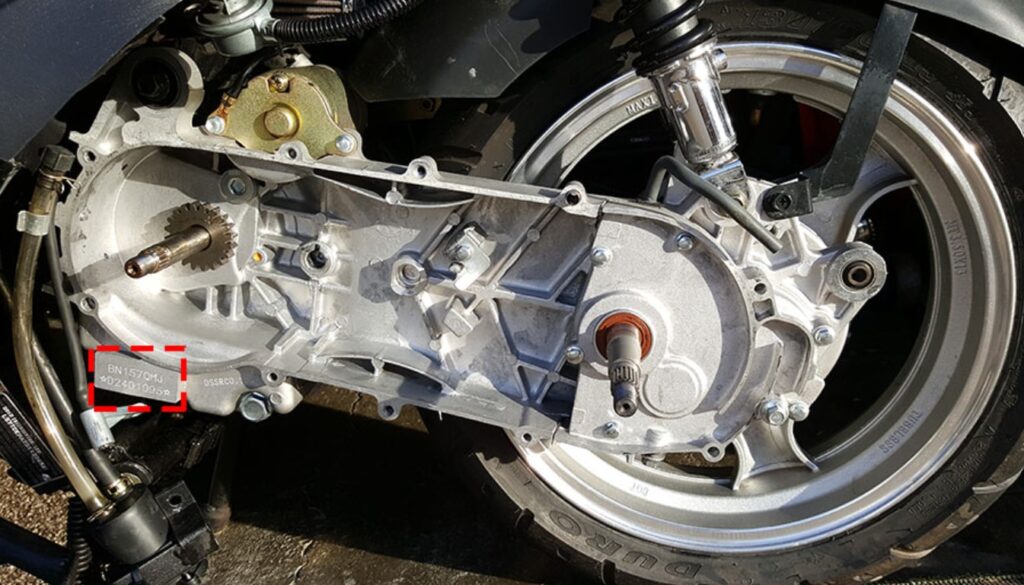
Short-case GY6 engines typically have a crankcase length of around 8 inches (203 mm), while long-case engines measure approximately 12.5 inches (318 mm). This measurement is crucial for ensuring compatibility with your scooter or vehicle, particularly when considering replacements or upgrades.
What Is The Spec Of The GY6 Engine?
The GY6 engine, a single-cylinder four-stroke engine, comes in various specifications, with the most common displacements being 50cc, 125cc, and 150cc. These engines typically have a bore size of around 57mm and a stroke of 58.5mm (for the 150cc variant).
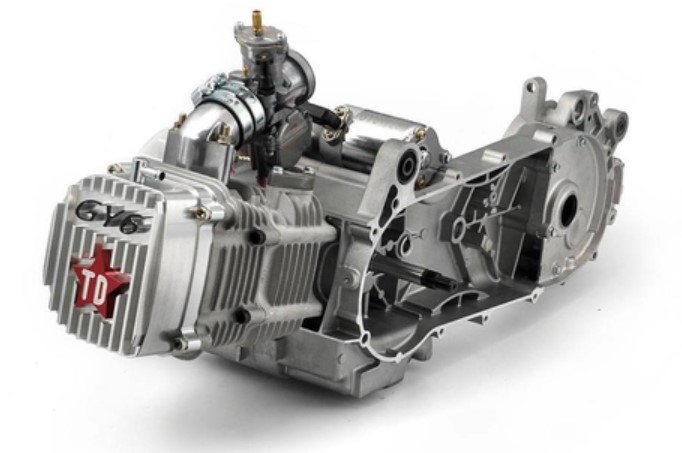
They are air-cooled and incorporate a CVT (Continuously Variable Transmission) system. The power output varies depending on the displacement, with the 150cc variant producing around 7.8 hp (5.8 kW) and the 50cc variant being less powerful. The engine’s design allows for both electric and kick-starting mechanisms.
Is GY6 Motor A Honda Clone?
The GY6 engine is often referred to as a “Honda Clone” or “Honda Spec” because its design is based on a Honda engine originally developed for scooters.
However, the GY6 has evolved and diversified over the years, with various manufacturers making modifications and adjustments. While the basic design and operation principles remain similar to the original Honda model, GY6 engines are now produced by a wide range of manufacturers, each adding their own specifications and features.
It’s important to note that while GY6 engines share heritage with Honda designs, they are not direct copies and can vary significantly in terms of components and performance.
Conclusion
In conclusion, while GY6 engines share a common design, they are not all the same. Variations in engine displacement, carburetor types, and starter mechanisms cater to different needs and preferences.
Understanding these differences is key to selecting the right engine for your needs, ensuring proper maintenance, and making informed decisions about repairs and upgrades. Recognizing the diversity of GY6 engines helps users maximize their benefits and enjoy a tailored riding experience.
People Also Ask
What Are Common Upgrades for GY6 Engines for Better Fuel Efficiency?
To improve fuel efficiency in GY6 engines, consider upgrades like a high-flow air filter, a more efficient carburetor, and ensuring the engine is properly tuned. Regular maintenance is also key to keeping the engine running efficiently.
Can GY6 Engines be Used in Cold Climates?
GY6 engines can operate in cold climates, but they may require some adjustments, such as using a thicker oil and ensuring the battery is fully charged. Warming up the engine before riding is also recommended in cold weather.
How Does Altitude Affect GY6 Engine Performance?
At higher altitudes, the air is thinner, which can reduce the amount of oxygen available for combustion, leading to a decrease in engine power. Adjusting the carburetor to allow for more air can help mitigate this effect.
Is It Difficult to Repair a GY6 Engine?
GY6 engines are designed to be user-friendly when it comes to repairs. Their simplicity and the wide availability of parts make them relatively easy to work on, even for those with basic mechanical knowledge. However, for more complex issues, professional assistance is recommended.
Why Does My GY6 Engine Have Starting Problems?
Starting problems in GY6 engines can be due to a range of issues, including a drained battery, spark plug issues, clogged carburetor, or problems with the starter motor. Checking these components can often resolve starting issues.

Matt Rex brings 12 years of specialized automotive expertise, holding a professional degree in Automotive Engineering Technology. As the founder of Turbochaos, he delivers comprehensive diagnostic services, performance optimization, and fleet maintenance solutions, backed by advanced certifications in hybrid/electric systems and ADAS technology. Its innovative methodologies have earned industry recognition while maintaining a 98% customer satisfaction rate.

![GY6 [EVERYTHING YOU NEED TO KNOW] decode your engine!](https://www.turbochaos.com/wp-content/cache/flying-press/zdrwJb8MLHI-hqdefault.jpg)
